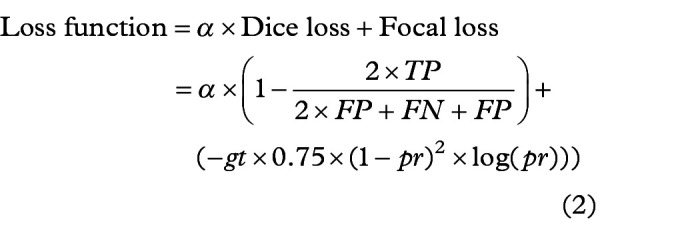CMS-NET:扫描源光学相干断层扫描图像中睫状肌的分割和量化的深度学习算法。
IF 3.3
3区 医学
Q2 PHARMACOLOGY & PHARMACY
引用次数: 1
摘要
背景:睫状肌在近距离工作时改变晶状体的形状以维持清晰的视网膜图像中起作用。研究睫状肌在调节过程中的动态变化,对了解老花眼的发生机制是必要的。光学相干断层扫描(OCT)经常被用来成像睫状肌及其在体内调节过程中的变化。然而,由于图像数据量大、成像质量低的影响,分割过程繁琐且耗时。目的:建立一种基于光学相干断层扫描(OCT)图像的睫状肌全自动分割和定量方法。设计:透视横断面研究。方法:本研究使用3500张签名图像开发深度学习系统。基于广泛使用的U-net和全分辨率残差网络,提出了一种新的深度学习算法,实现了纤毛肌的自动分割和量化。最后,对算法预测结果和人工标注结果进行了比较。结果:该系统分割的总平均像素值差(PVD)为1.12,Dice系数、intersection over union (IoU)和灵敏度分别为93.8%、88.7%和93.9%。该系统的性能可与经验丰富的专家相媲美。该系统还可以成功分割睫状肌图像,量化调节过程中睫状肌厚度的变化。结论:开发了睫状肌自动分割框架,可用于分析调节过程中睫状肌形态学参数及其动态变化。本文章由计算机程序翻译,如有差异,请以英文原文为准。



CMS-NET: deep learning algorithm to segment and quantify the ciliary muscle in swept-source optical coherence tomography images.
Background: The ciliary muscle plays a role in changing the shape of the crystalline lens to maintain the clear retinal image during near work. Studying the dynamic changes of the ciliary muscle during accommodation is necessary for understanding the mechanism of presbyopia. Optical coherence tomography (OCT) has been frequently used to image the ciliary muscle and its changes during accommodation in vivo. However, the segmentation process is cumbersome and time-consuming due to the large image data sets and the impact of low imaging quality. Objectives: This study aimed to establish a fully automatic method for segmenting and quantifying the ciliary muscle on the basis of optical coherence tomography (OCT) images. Design: A perspective cross-sectional study. Methods: In this study, 3500 signed images were used to develop a deep learning system. A novel deep learning algorithm was created from the widely used U-net and a full-resolution residual network to realize automatic segmentation and quantification of the ciliary muscle. Finally, the algorithm-predicted results and manual annotation were compared. Results: For segmentation performed by the system, the total mean pixel value difference (PVD) was 1.12, and the Dice coefficient, intersection over union (IoU), and sensitivity values were 93.8%, 88.7%, and 93.9%, respectively. The performance of the system was comparable with that of experienced specialists. The system could also successfully segment ciliary muscle images and quantify ciliary muscle thickness changes during accommodation. Conclusion: We developed an automatic segmentation framework for the ciliary muscle that can be used to analyze the morphological parameters of the ciliary muscle and its dynamic changes during accommodation.
求助全文
通过发布文献求助,成功后即可免费获取论文全文。
去求助
来源期刊

Therapeutic Advances in Chronic Disease
Medicine-Medicine (miscellaneous)
CiteScore
6.20
自引率
0.00%
发文量
108
审稿时长
12 weeks
期刊介绍:
Therapeutic Advances in Chronic Disease publishes the highest quality peer-reviewed research, reviews and scholarly comment in the drug treatment of all chronic diseases. The journal has a strong clinical and pharmacological focus and is aimed at clinicians and researchers involved in the medical treatment of chronic disease, providing a forum in print and online for publishing the highest quality articles in this area.
 求助内容:
求助内容: 应助结果提醒方式:
应助结果提醒方式:


